Powering the Reuse Revolution
Reuse – the transformative solution
The issue of plastic pollution needs no introduction. The plastics crisis can be seen on our screens and on our streets, in our oceans and in our landfills, in the air we breathe and in the food we eat. This has been driven in no small part by single-use plastic food packaging. Something that does, however, need a better introduction, is what we mean when we talk about reuse – something that we champion at City to Sea across all of our work.
We currently consume 1.75 times more resources each year than the Earth can naturally regenerate. And we’re on course to more than double resource use by 2050. With only 9% of global plastic waste actually being recycled, managing waste once it’s generated is not going to solve our plastic crisis. Investment and growth of reuse systems is going to be critical to driving the transition away from our current disposable single-use culture.
Amongst progressive businesses, governments and NGOs, there is now consensus on the importance of moving our economy from the current linear ‘take, make, dispose’ model to a circular economy that designs waste out of the system and values and retains our natural resources. Reuse systems offers a transformative solution to single-use packaging by reducing virgin material use, retaining packaging in the economy, diverting waste packaging away from landfill and incineration, and reducing pollution and emissions.
No excuse for single-use
Whilst the attention has been on dealing with single-use plastic, in reality it is our additional to disposable packaging that needs to be addressed. At City to Sea our work focuses on tackling ALL single use packaging, looking instead to replace this with more circular alternatives, keeping materials in the system and reducing the mountains of waste we create every year.
Whether a single use item is made from plastic, cardboard, bamboo or biodegradable plastic it still involves the use of precious raw materials in its production, transportation and then eventually disposal. If those materials are:-
- Wood based – it involves deforestation (although some waste wood may be available there are loads of potential uses for waste wood and if we replace single use plastic with single use paper/cardboard etc we’ll soon be chopping down trees to fill demand). Even if made from recycled paper and cardboard – again that’s recycled paper/cardboard is better used where it’s the best option – think loo roll, paper and cardboard!
- Plant based – it involves use of precious land which could otherwise be used to produce food or restore nature
- Seaweed/algae based – again this involves loads of infrastructure and a better use for seaweed/algae is as food or animal
- Recyclable –
– It involves energy to break down and recycle the materials and then more energy to recreate the original item
– Most plastics can only be recycled so many times
– Recycling plastic into clothes can just make things worse – turning “recyclable” bottles into “unrecyclable” clothing that sheds microplastics when washed. See Why Making Clothes from Plastic Bottles is a False Solution – City to Sea.
– Reports have found that drinks bottles made from recycled plastic leach more chemicals into the drink than bottles made from virgin plastic.
– Recycled plastic bottles leach more chemicals into drinks, review finds | Plastics | The Guardian
– Unpacking the complexity of the PET drink bottles value chain: A chemicals perspective – ScienceDirect
In a complex environmental emergency we simply can’t afford to continue this rubbish system and we need to move everything possible to reuse.
What are Reuse systems?
Although there is no universally agreed definition of a ‘reuse system’, most recognise the term to be a comprehensive system designed for multiple circulations of reusable packaging which remains in the ownership of the reuse system and is loaned to the consumer
Reusable packaging is refilled or used for the same purpose for which it was conceived, in its original form, with no additional reprocessing needed except for cleaning. Reusable packaging is designed to accomplish a minimum number of trips, or rotations, in a system designed for reuse.
Whilst reuse systems generally need to be tailored by business sector and socio-economic context in which they operate, there are four well recognised and accepted reusable packaging systems* which can be broadly divided into two types: refill and return**.
Return: the packaging is owned and cleaned by a business (or group of businesses). Consumers effectively rent the packaging and return it after use to be cleaned, refilled and redistributed.
Refill: the consumer owns the container after the first purchase and refills it from a refill or auxiliary product (at home) or at an in-store refill station to be (on-the-go).
*Ellen MacArthur Foundation. **Many Happy returns report.
Refill & Reuse models explained
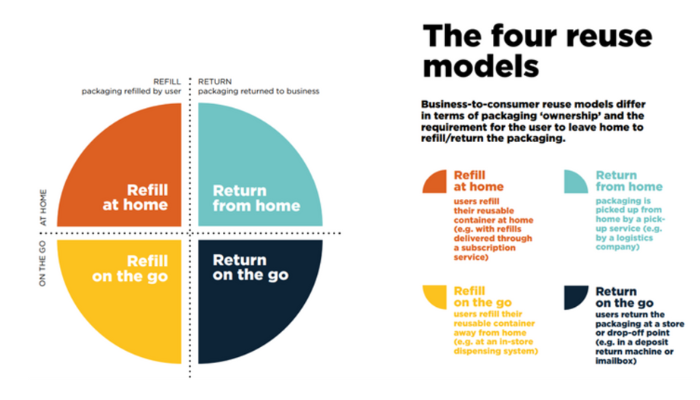
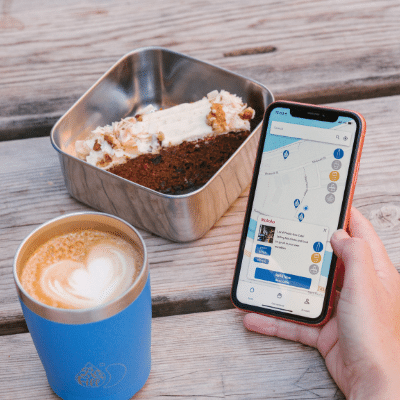
Refill on-the-go:
Here at City to Sea, we’ve been working hard for the last few years to make Refill on-the-go options more accessible and affordable through our Refill campaign and app. This maps hundreds of thousands of places customers can eat, drink and shop with less plastic. In this “Refill on-the-go” system, customers would carry their reusable containers and refill them when they are out and about. This could be as simple as a water bottle from a fountain or a food staple from an in-store dispensing system.
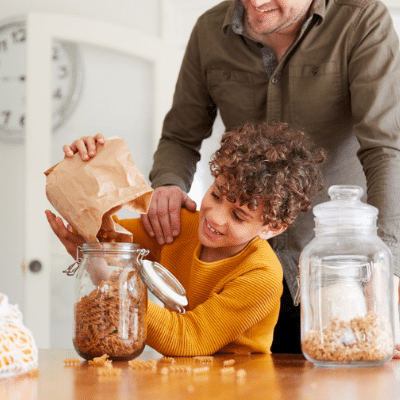
Refill at home:
Refill from the convenience of your own home! What could be better? This model allows customers to refill their reusable containers at home. This could be for example using concentrated cleaning products that need watering down.
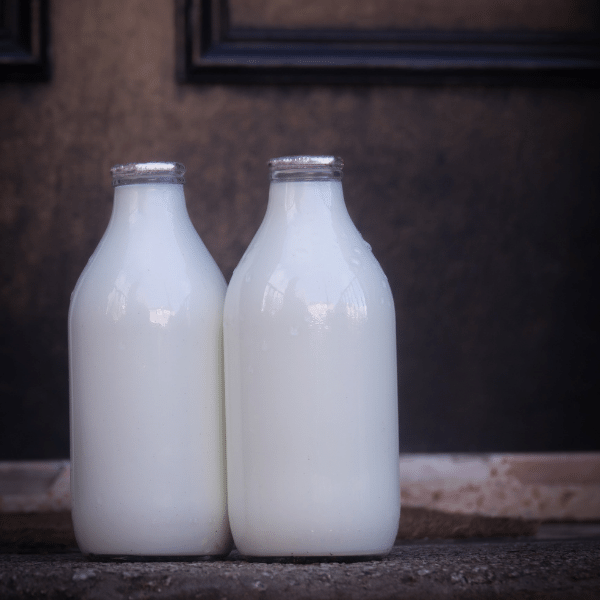
Return from home:
This model is easy to understand for most Brits as it conjures an image long held in our society. It’s the modern-day equivalent of a milkman walking up your street to drop off a product (the milk) to your door in reusable bottles while picking up the empty bottles you’ve left out. This type of ‘return from home’ model has been growing substantially and there are now a number of retailers offering home delivery services for everything from milk to dried goods and groceries. Milk and More for example have partnered with both Good Club and Again to offer a wide-range of products from shampoo to porridge oats in reusable packaging all delivered and collected from your door.
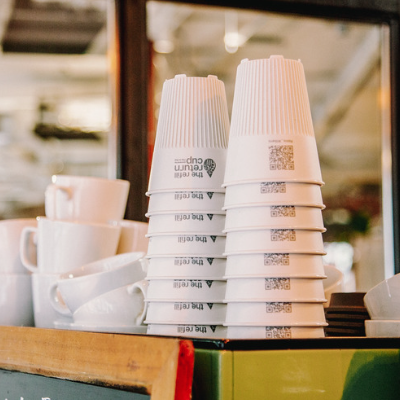
Return on-the-go:
Users return the packaging at a store or drop-off point (e.g. in a deposit return machine or a mailbox).
This model encourages people – normally economically through a deposit system – to return the packaging at a store or drop-off point. All over Europe this has become normalised through “reverse vending machines” that can scan returned packaging. While this model is used mainly to drive up recycling rates, it can also be used to encourage reuse. In Denmark for example, about a quarter of marked containers are returnable/reusable.
For most shoppers this means you remove any messy or difficult “refilling” process in store and instead, like the refill at home model, companies “prefill” the containers in factory settings before they reach the retail outlet.
At City to Sea, we’re working with industry experts to explore and trial return options in the retail environment. These options overcome many of the barriers experienced by consumers when it comes to self-refills such as needing to remember your own container, the perceived messiness and also hygiene concerns.
We’ve also launched our very own, return on-the-go system for hot drinks in our home city of Bristol. The Refill Return Cup enables consumers to get their coffee on-the-go in a reusable cup (free of charge) which they then drop off at a drop off point in multiple cafes across the city when they’re finished. This type of borrow-and-return system has the potential to reduce millions of pieces of packaging every year by tackling the mountains of waste we create when eating and drinking on-the-go.
What are the benefits of reuse?
If executed successfully, reuse systems can create huge benefits to society – not only by preventing plastic pollution impacting the environment and our oceans, but also by reducing the costs associated with managing waste and supporting the societies that invest in them.
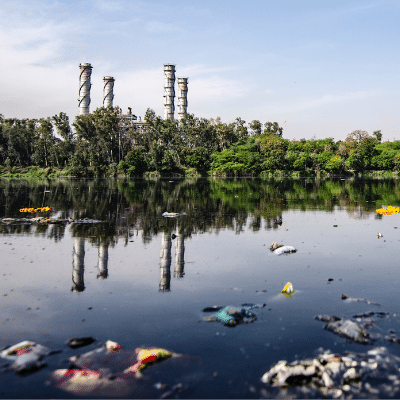
Environmental
Reuse models can help reduce plastic pollution and also generate fewer greenhouse gas emissions than single-use. When used frequently enough across their lifecycle, reusable products have lower environmental impacts than single-use products. The higher the number of repeat uses of a product, the lower the environmental impact.
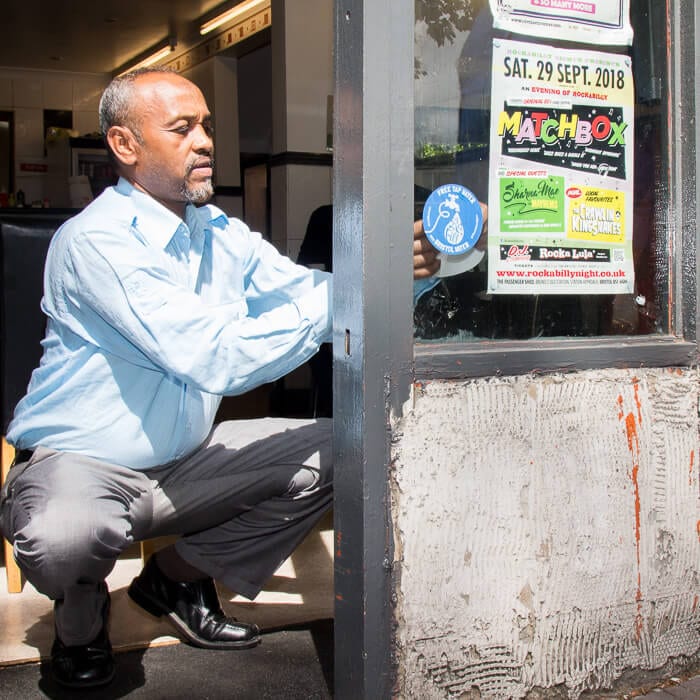
Economic
The Ellen MacArthur Foundation estimates that replacing just 20% of single-use plastic packaging with reusable alternatives offers an opportunity worth at least USD 10 billion. Reuse models can help to encourage customer loyalty, packaging savings, and easier data analysis.
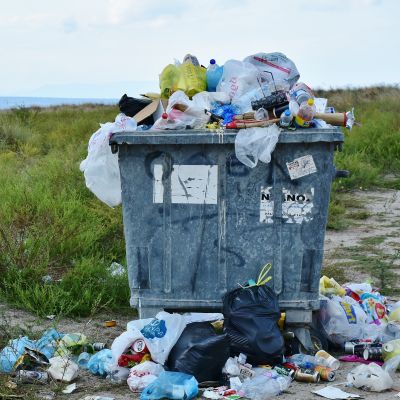
Social
Introducing reuse systems in places where waste management systems are not functioning can reduce the impact of plastic waste on vulnerable communities. If introduced at scale, reuse systems can reduce the need for waste management systems such as incineration which is shown to have a harmful impact on the communities where they are located.
Reduce, Reuse, Recycle
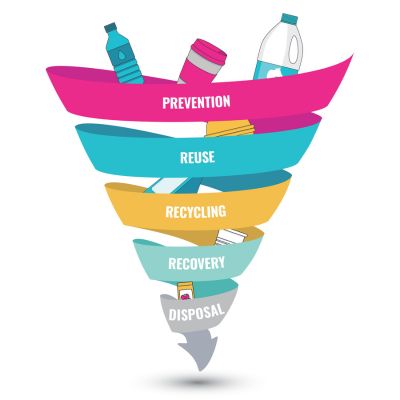
‘Reuse’ is the second of the 3 ‘R’s (Reduce, Reuse, Recycle) and in the context of the waste hierarchy, should be prioritised over recycling. Despite this, investment remains low and recycling is still seen as the solution by many businesses and governments – something that is encouraged by big brands.
Reuse solutions prevent waste upstream and are therefore fundamentally different from so-called downstream solutions, such as recycling, incineration, or disposal. Downstream solutions deal with waste once it has been generated by the system.
Recycling is not the answer. While recycling plays a crucial role in waste management and we need to scale up our recycling systems, that alone cannot solve the plastic crisis. The current scale of plastic production and consumption far exceeds the capacity of recycling facilities, leading to a significant portion of plastic waste ending up in landfills or incinerated.
We need to reduce the amount we produce instead of trying to recycle more. It’s also worth remembering that not all plastics are recyclable, and many are downcycled into lower-quality products with limited market demand, ultimately ending up as waste. Lastly, recycling comes with an eco-cost. The recycling process itself consumes energy and resources, contributing to carbon emissions and environmental impacts. And this is just the theory of why it isn’t the answer. In reality, recycling is highly flawed as a result of inadequate infrastructure, inconsistent recycling practices, and low consumer participation rates.
System change not consumer change
So far reusable solutions have focused on radically changing consumer behaviour and imposing on consumers a level of inconvenience and effort corporations have for decades led consumers to not expect. For reuse to work we need to make it as convenient for the consumer as single use and that means that the effort needs to be put in by the corporations who created the expectation of convenience. To genuinely reduce single use waste we need a system that consumers will and can adopt and which works with existing retail structures.
We believe to truly change the system, we need governments to create and reinforce meaningful legislation and businesses to be held to account. Whilst we as citizens and consumers do have an important role to play, there needs to be less focus on dealing with plastic as an individual consumer issue and the real polluters – the big brands and businesses need to be held responsible for cleaning up their act!
We need an end to corporates buying too much stock and then encouraging us to buy things we don’t need via sales and Black Friday. We need an end to corporates promoting more and more “seasons”, constantly trying to persuade us that things in our home are no longer in vogue, that our clothes and furnishings are out-of-fashion. It’s corporate behaviour that has created the single use system and we need to change that system – so it’s the corporates that need to change.
Government support for a reuse systems
We are calling on the government, grant funders and corporates to start directing funds, effort and legislation into supporting a true reuse system. And that requires a change in the system and corporate behaviour, not a change in consumer behaviour.
We need the Government to stop tinkering with measures that create tiny insignificant changes and tackle single use waste in the way they finally tackled smoking, helping to make our public spaces litter free as well as smoke free. That requires putting in place systems which significantly disincentivise single-use and makes reuse a convenient and viable option for both businesses and consumers.

